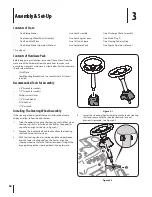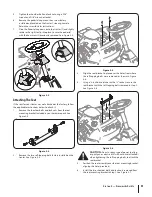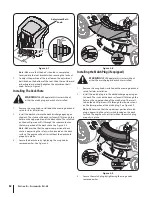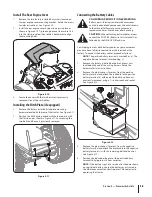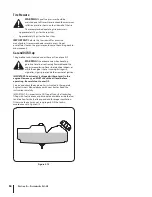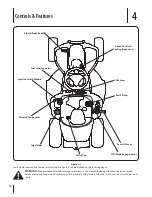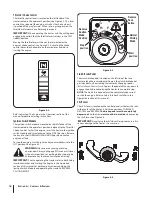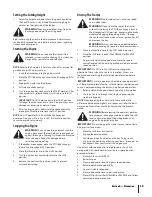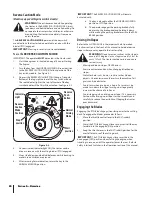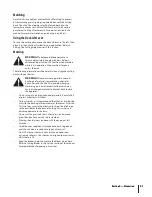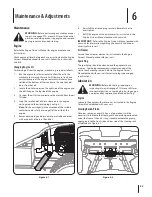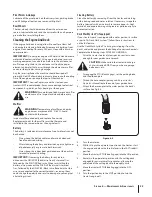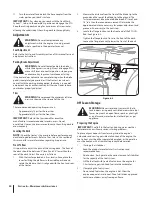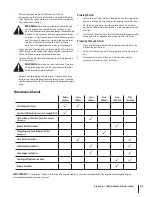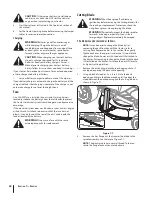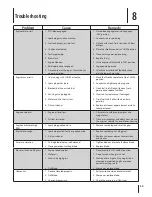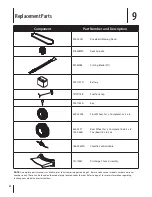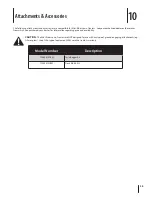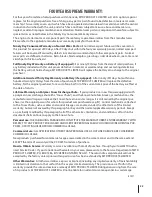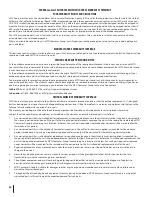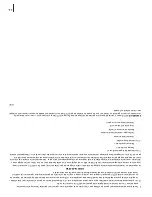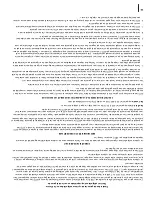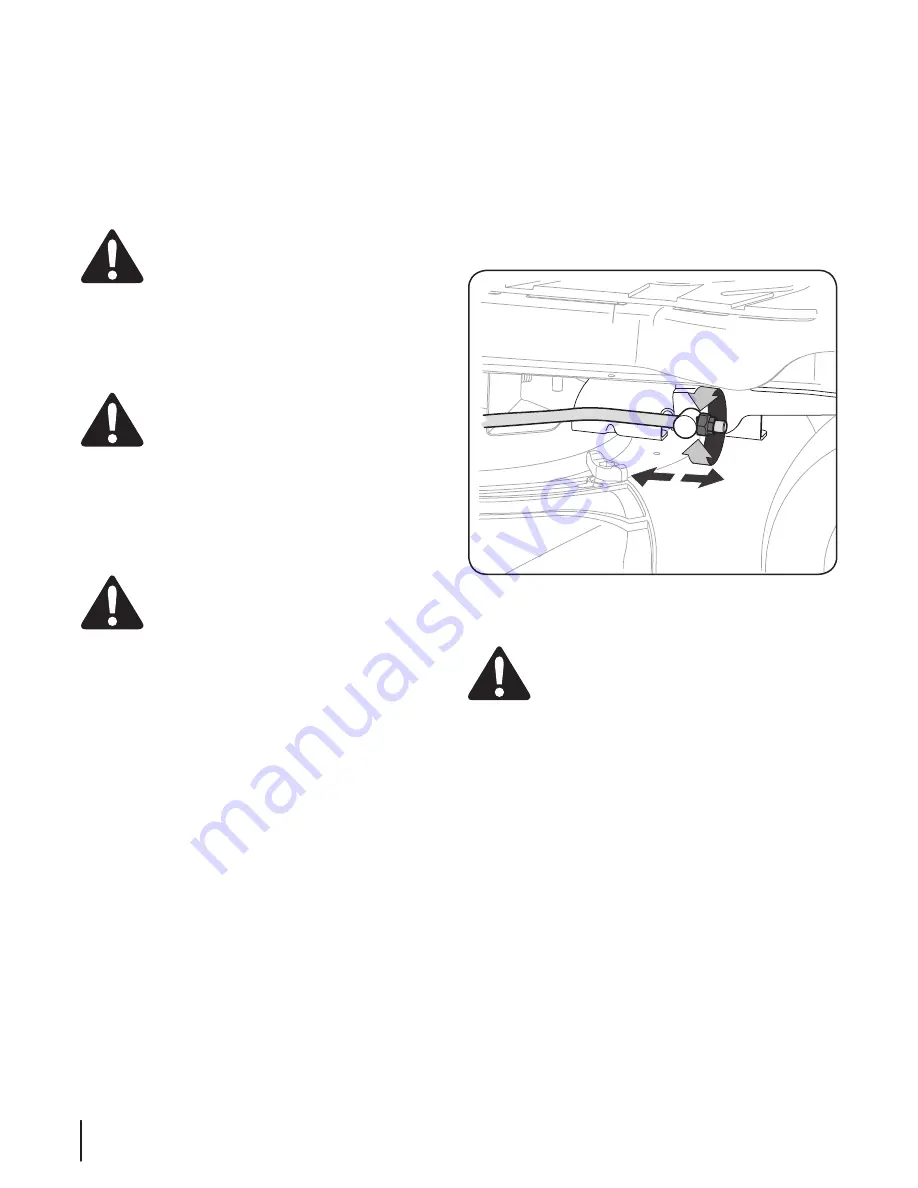
11. Turn the water off and detach the hose coupler from the
water port on your deck’s surface.
IMPORTANT:
After cleaning your deck with the Deck Wash
System™ , return to the operator’s position and engage the PTO.
Keep the cutting deck running for a minimum of two minutes,
allowing the underside of the cutting deck to thoroughly dry.
Adjustments
WARNING:
Never attempt to make any
adjustments while the engine is running, except
where specified in the operator’s manual.
Seat Adjustment
Refer to the Set-Up and Assembly section of this manual for seat
adjustment instructions.
Parking Brake Adjustment
WARNING:
Never attempt to adjust the brakes
while the engine is running. Always disengage PTO,
move shift lever into neutral position, stop engine
and remove key to prevent unintended starting.
If the tractor does not come to a complete stop when the brake
pedal is completely depressed, or if the tractor’s rear wheels
can roll with the parking brake applied, the brake is in need of
adjustment. See an authorized Troy-bilt Service Dealer to have
your brakes properly adjusted.
Tires
WARNING!
Never exceed the maximum inflation
pressure shown on the sidewall of the tire.
The recommended operating tire pressure is:
•
Approximately 14 psi for the rear tires
•
Approximately 20 psi for the front tires
IMPORTANT:
Refer to the tire sidewall for exact tire
manufacturer’s recommended or maximum psi. Do not
overinflate. Uneven tire pressure could cause the cutting deck to
mow unevenly.
Leveling the Deck
NOTE:
Check the tractor’s tire pressure before performing any
deck leveling adjustments. Refer to Tires, later in this section of
this manual for more information regarding tire pressure.
Front To Rear
It is possible to adjust the pitch of the cutting deck. The front of
the deck should be between 0” (level) and 1⁄4” lower than the
rear of the deck. Adjust if necessary as follows:
1.
With the tractor parked on a firm, level surface, place the
lever for lifting the platform in the middle position and
rotate the blade so that it is aligned with the front and rear
of the tractor.
2.
Measure the distance from the front of the blade tip to the
ground and the rear of the blade tip to the ground. The
first measurement taken should be between 0” (level) and
1⁄4” less than the second measurement. Determine the
approximate distance necessary for proper adjustment and
proceed, if necessary, to the next step.
3.
Locate the flange lock nut on the front end of the PTO Lift
Rod. See Figure 6-3.
•
Tighten the flange lock nut to raise the front of the deck;
•
Loosen the flange lock nut to lower the front of the deck.
Figure 6-3
Off Season Storage
WARNING!
Never store lawn tractor with fuel in
tank indoors or in poorly ventilated areas where fuel
fumes may reach an open flame, spark, or pilot light
as on a furnace, water heater, clothes dryer, or gas
appliance.
Preparing the Engine
IMPORTANT:
Fuel left in the fuel tank during warm weather
deteriorates and will cause serious starting problems.
To prevent gum deposits from forming inside the engine’s
carburetor and causing possible malfunction of the engine, the
fuel system must be either completely emptied, or the gasoline
must be treated with a stabilizer to prevent deterioration.
1.
If using a fuel stabilizer:
•
Read the product manufacturer’s instructions and
recommendations.
•
Add to clean, fresh gasoline the correct amount of stabilizer
for the capacity of the fuel system.
•
Fill the fuel tank with treated fuel and run the engine for
2-3 minutes to get stabilized fuel into the carburetor.
2.
If emptying the fuel system:
•
Do not drain fuel when the engine is hot. Allow the
engine adequate time to cool. Drain fuel into an approved
container outdoors, away from open flame.
24
S
ection
6— M
aintenance
& a
djuStMentS
Summary of Contents for 26J Mini-Rider
Page 36: ...36 Notes ...
Page 37: ...Notes 36 ...

